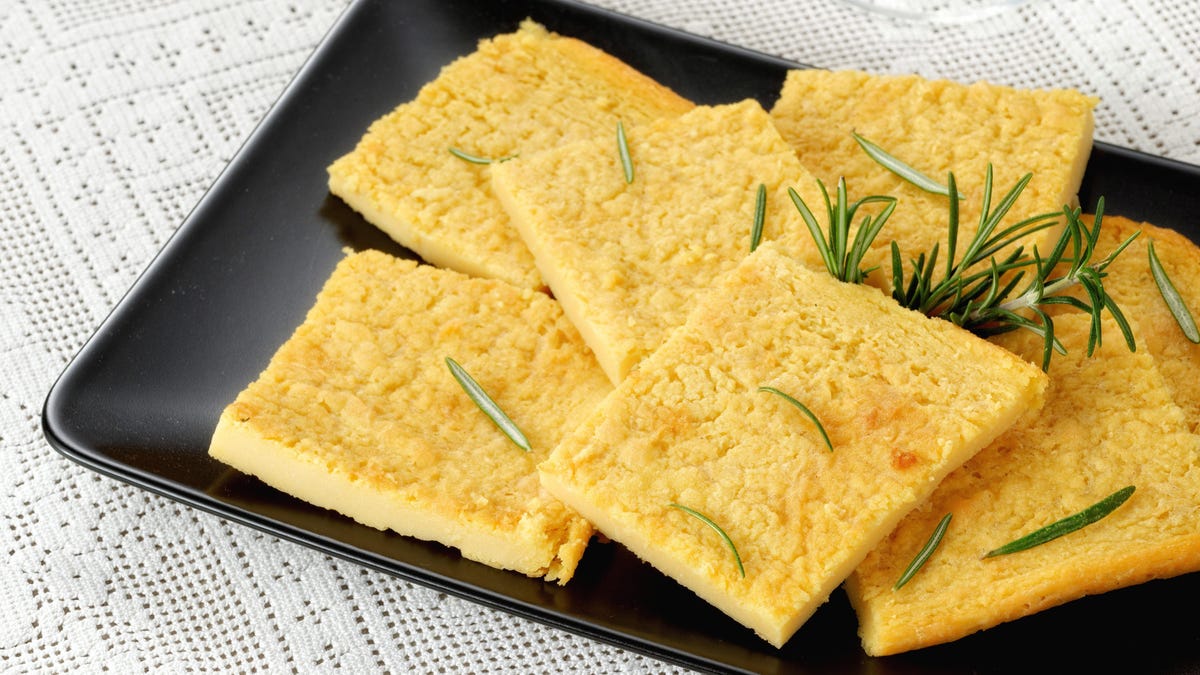Make the Most of Your Herbs With This Sicilian Street Food

If you’re trying to spend a White Lotus summer away from home rather than on the beaches of Sicily, you can still get a taste of this lifestyle. Summer means an abundance of delicious herbs, so much so that you can run into an overabundance, especially if you’re into gardening. Plain old parsley and mint may be a garnish for some, but they play a major role in Mediterranean cuisine.
Get a taste of Sicily by using a variety of herbs to make a favorite street food: panele.
Street food in Italy, especially in Sicily, is a legend, and often there is a legend behind the food itself. Somewhat similar to socca or falafel bread, panele are chickpea flour fritters with different seasonings, depending on where you get them.
Chickpea-based dishes are popular throughout the Mediterranean, and in Sicily they are added to pastas, salads, and street foods such as panele. While these foods are said to have been introduced by Arab rulers in the ninth and tenth centuries, like many other delicacies we have adopted—citrus fruits, almonds, and olives—there is no official or written record of the details.
This unique Sicilian food is widely available both as street food and in restaurants specializing in fried food called “friteria”. Panelle can be plain, seasoned with parsley, lemon or black pepper, or topped with cheese such as spicy caciocavallo or pecorino. Sometimes the panele is tucked into a soft sesame bun, as sesame is another favorite Arabic import. After the immigrants started making them here in America, mostly in South Brooklyn where my family immigrated, they were served with a scoop of fresh ricotta.
I first tried panele when one of my aunts made it for Christmas, a vegetarian appetizer served before our Feast of the Seven Fishes, also known as “Sette Pesci”. Since then I have made my own in so many different ways.
Panelle cooks much faster than falafel, but a little more labor intensive than socca bread. They make a great snack or carb meal if you add them to a sandwich. Like falafel, panele is fried to a beautiful golden crisp. Chickpea cakes are even served on top of pizzas in Argentina and Uruguay, and while they’re not called panele, there’s nothing stopping you from doing the same with the ones you make.
Get the equipment needed to craft the panel:
- Baking Tray to Cool Dough: G&S Metal Products 17.3″ x 11.2″ non-stick.
- Thermometer to make sure your oil is hot: ThermoPro TP19H digital thermometer.
- Offset spatula for smooth and even panels: 6.5″ stainless steel offset cake spatula.
My version is seasoned with black pepper and parsley and plenty of olive oil and salt, but lately I’ve been experimenting with adding additional herbs from the garden like mint, chives and tarragon. They are also delicious when made with fennel leaves, and sometimes I add lemon zest to the mixture.
Regardless of what goes into my panel, I love eating them solo more than in a sandwich, but that’s probably just because I’m parked here in America and not in the Sicilian sun where the bread is fine-tuned to that dish. . . I always squeeze in a generous amount of lemon juice, sprinkle some parsley and salt on top, and eat as much as I can handle right after frying.
Herbie Panelle
Ingredients:
- ½ cup chopped fresh parsley (any will do) or 2 tablespoons each chopped green onion, mint, and parsley
- 1 ½ cups chickpea flour
- 3 glasses of water
- 1 tablespoon olive oil
- 1 teaspoon salt
- ½ cup at least neutral oil for frying
- Lemon wedges, salt and chopped parsley/greens for serving
Grease the baking sheet well and set aside.
Combine the chickpea flour and water in a saucepan over medium heat, it will take a minute to emulsify as the flour is quite dry.
Before a boil occurs, toss in the salt and keep stirring.
When the mixture boils, it will thicken quickly.
After simmering for two to three minutes, quickly add the olive oil and herbs and stir for 30 seconds to a minute until the mixture is as thick as oatmeal.
Spread the mixture on the baking sheet with an offset spatula and let it cool.
The mixture takes about an hour to cool, and you can refrigerate it if you want to speed up the process, but the mixture will solidify well when it stops cooking.
Cut into squares or wedges, then fry in hot oil (at least 360-370°F) in a heavy bottomed pan. If the oil isn’t hot enough, the panel will fall apart and turn into a mess, but it’s pretty tasty.
Make sure your oil is hot enough, this will also help form a golden brown crust, so don’t overfill the pan and heat the oil well before you start adding any pancakes.
Drain the panel on paper towels if you can wait that long. I usually start eating them while they are hot as lava and have no regrets.
Garnish with a lemon wedge, chopped herbs, and a pinch of cheese if you like, but I promise they don’t need cheese.
Serve immediately or remove to reheat. While it’s best to cook the dough, keep it, and fry it fresh, panels are great hot or at room temperature.
While some food bloggers don’t like reheated pans, I’m a big fan, especially when they’re reheated in the air fryer. If you roast them properly, they should be thick enough to brown a second time in a tabletop convection oven.
Enjoy a homemade aperitif , happy hour beer or just a summer dinner. With their well-balanced combination of saltiness, lemony freshness, and a touch of bitterness that they bring to the table, panels go great with a side dish or even other carbs like pizza and sandwiches.